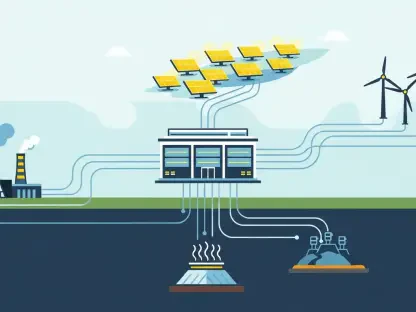Imagine a future where power outages are relics of the past, replaced by consistent and reliable energy access. This vision is rapidly becoming a reality due to groundbreaking innovations in battery storage technologies. As the demand for sustainable and resilient energy infrastructure intensifies, battery storage emerges as a pivotal solution, offering a robust means to store excess energy and release it as needed. This article delves into the evolution of battery storage, showcasing how this trend is reshaping the energy landscape.
Current Battery Storage Landscape
Market Data and Growth Trends
In recent years, the battery storage market has experienced significant growth, with projections indicating continued expansion due to technological advancements and increased demand for sustainable energy solutions. Reports reveal that the market for battery storage solutions has surged, particularly with the adoption of lithium-ion batteries as a standard in energy systems. This trend highlights a strong commitment from industries worldwide to transition to cleaner and more reliable energy sources, with stakeholders investing extensively in storage technologies.
Furthermore, research underscores a consistent rise in global installations of battery storage solutions, aligned with a broader movement toward electrification. This growth is driven by the dual need for energy security and reduction of carbon emissions, prompting industries to adopt battery storage as a core component of their energy strategies. The strategic integration of storage systems into energy grids exemplifies how these innovations are becoming indispensable in maintaining balance and reliability.
Real-World Applications and Case Studies
A prime example of battery storage’s impact is Ameren Missouri’s Big Hollow Energy Center, a forward-thinking infrastructure project located in Jefferson County. This facility combines an 800-MW simple-cycle gas plant with a 400-MW battery storage facility, illustrating the synergy between traditional and modern energy sources. The initiative is designed to address rising electricity demands while ensuring grid resiliency, marking Ameren’s significant stride into large-scale storage.
Notable companies spearheading battery storage adoption include Tesla and General Electric, leveraging their expertise to push the boundaries of energy storage capabilities. These companies successfully deploy large-scale battery systems across industrial and residential sectors, reducing reliance on fossil fuels and enhancing energy security. Such implementations underscore the far-reaching applications of battery storage, offering scalable solutions adaptable to diverse energy needs.
Expert Insights
Industry experts emphasize the crucial role of battery storage in transforming energy systems. Prominent figures advocate the technology as an enabler for sustainable development, acknowledging the challenges of storage capacity and cost-effectiveness. Thought leaders argue that battery improvements are indispensable for accelerating the adoption of renewable energy sources, highlighting the need for ongoing innovation in storage technologies to overcome existing limitations.
Professionals in the field also stress the importance of collaboration among industry players, policymakers, and researchers to drive progress. They contend that addressing energy storage challenges requires a concerted effort to foster technological advancements, standardize regulations, and promote investment in research. Insights from renowned professionals affirm the strategic importance of battery storage, recognizing it as a cornerstone for achieving sustainability goals.
Future Outlook for Battery Storage
Looking ahead, the future of battery storage technology holds promising developments characterized by increased efficiency, scalability, and integration with renewable energy sources. Emerging trends suggest a continued focus on reducing costs and enhancing battery longevity, as innovations aim to create more accessible and robust storage solutions. These advancements are expected to facilitate widespread adoption, particularly as industries seek to decarbonize and improve energy resilience.
However, the path forward is not without challenges. The industry must navigate issues related to materials sourcing, lifecycle management, and the environmental impacts of battery production. As battery storage technology evolves, overcoming these hurdles will be pivotal to maximizing its potential across sectors. The anticipated outcomes suggest significant growth opportunities, with battery storage poised to play a transformative role across industries, catalyzing the transition to a sustainable energy future.
Conclusion
In conclusion, battery storage innovations have redefined the energy landscape, offering solutions to pressing energy demands and sustainability challenges. The remarkable progress in battery technologies highlights their potential to revolutionize how energy systems operate. As industries continue to embrace this trend, the emphasis on collaborative efforts and innovation will shape the trajectory of battery storage development. The expanding role of battery storage underscores a pivotal moment, presenting opportunities for future solutions and greater environmental stewardship.









